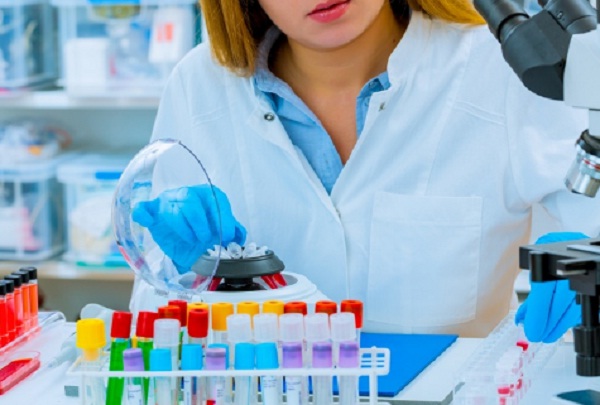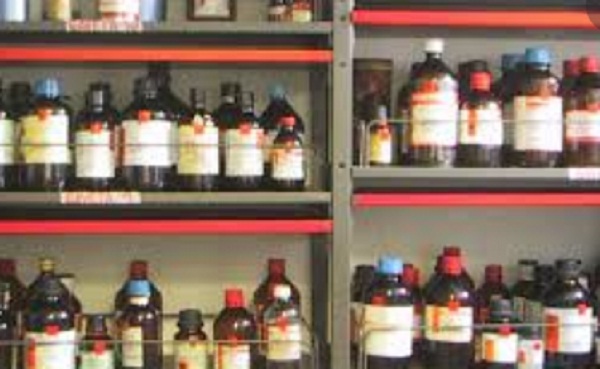In laboratories there are various materials and reagents that are used to analyze substances. With the intention of studying its qualities that will serve for scientific advances. I invite you to read this article getting to know laboratory reagents. Where you will find the definition of reagents, a list of the most obtained in the place, their function, the types and where to place them on the market.
Laboratory reagents definition
It is when the elements or compounds generate a reaction. It allows the recognition of the nature of the atoms, molecules, ions that make it up according to the reaction it manifests. It is a compound that reacts with others. All substances that are commonly found in the laboratory are known by that name. Used to conduct experiments and the analysis of samples in studies. It refers to the elements that combine with each other, to transform into new substances. Are the substances present on the left side of a chemical reaction the reactants.
In the same way, in the branches of chemistry, reagents can be defined. In organic chemistry, they are those whose conformation allows them to be called compounds, mixtures, molecules that bind to a substance to promote its transformation, Examples of them are the Tollens, Brady, schiff reagent. In analytical chemistry, it is a compound that helps to determine the presence or lack of substances. Emphasizing the calculation of the concentration of the substance, the color change.
In the area of biology, it is called reactive to the antibodies, oligomers, cellular organisms. Which are used for identify the matter, about the cells.


Types of reagents
To address this line it is important to clarify that the reagents can be classified taking into account. The physicochemical properties of the reactants. The states of matter. Responsiveness. The dangerousness. The purity of the reagent. The quality of the reagent. For this occasion, the three most important aspects to consider the use that will be given will be addressed, aimed at the area of biochemistry, analytical chemistry, chemistry laboratory and clinical analysis. In second option to the purity of the reactants which is worked on achieving exact advances and precision. To achieve reliability in the analysis.
Using the product of high purity, it is the third option, where on its packaging specifies the analyzes of various impurities. Within the so-called analytical reagents we have those for analysis, the one that contains minimal impurities does not exceed that of the substances. We are the ones who have the highest degree of purity. Special ones, which are specific for analytical experiments as well as those used to make standard substances. In the third option it has to do with the dangerousness of the reagents, to begin with it must be taken into account that all containers have on their label with the danger warning.
Taking into account the danger to people and the environment, those that are dry-read on their label can be explosive are considered. Although they can be toxic, they produce vapors. Those that have indications aimed at the preservation of the reagent. The ones that indicate conservation, where it says "keep in a cool place". Do not smell the dust. When disposing of the waste other than through the pipe. Do not mix with such a product. There are other indications concerning the states of matter (solid, liquid, gaseous), their concentration and the chemical symbols of the compound.
Function of each reagent
The function of each reagent depends solely and exclusively
of the analysis to be performed on the sample. It is the analyst who must follow the
or the specific protocols for each reagent, considering the need
according to the study.
List of laboratory reagents
The existence of a wide range of reagents inside and outside the laboratory. It is essential for the development of different activities on the premises. In this sense for the various forms of organization of the reagents. It will depend on the chemical properties of the reagents. Which may be the nature, the dangerousness, the states of matter between otros.La the intention is to find a way to make it better understood, useful and more practical. However, we will start with sulfur (S), copper (Cu), zinc (Zn), ferrous sulfate heptahydrate, copper wire. Phenolphthalein powder, lead foil Pb, Cu, Zn, Al, sodium bicarbonate, magnesium shavings, anhydrous sodium carbonate.
Zinc permanganate, sodium hydroxide, sodium chloride among others, In liquids we have liquid phenolphthalein, methylene blue. Zinc nitrate, potassium chlorate, calcium nitrate, cupric nitrate, magnesium nitrate, silver nitrate. Iron nitrate, barium chloride, regulating salts, glacial acetic acid, hydrochloric, sulfuric, ammonium hydroxide, methyl acetate. Ethyl acetate, acetone, acetic acid, formic acid, hydrofluoric acid, lactic acid, nitric acid, oleic acid, perchloric acid, hydrogen sulfide, isoamyl alcohol.
Amyl alcohol, benzyl alcohol, propyl alcohol, tert butyl alcohol, aniline, benzaldehyde, benzylamine, reference buffer, phosphate buffer. Buffer of phosphate Ph= 7, chlorobenzene, cyclohexane, ethylene glycol, petroleum ether, phenol, pyridine, mineral oil, carbon sulfide, trichloro ethylene, among other.


Sale of laboratory reagents
For a long time the man seeks to caress the satisfaction of his needs. He has made various inventions for the advancement of science. This has caused it to manufacture innumerable reagents arising from nature. In this same order of ideas, achieve the location of the product, to obtain greater economic income. That the production and placement are always massive. In this same order of idea it is important to note that for the purchase of reagents. A certificate order is required. If what you want is good quality products contact via the internet with: Artilab, Dianet, in mercado libre venezuela, you can search online on the pages Artilab, Dianet, mercado libre Venezuela, quiminet, quiminet, planetvenezuela among many that have reagents.
Prices of laboratory reagents
Within the wide range we have propylene glycol in 50.37 euros, 98% hexyl alcohol (1-hexanol), 500 ml at 41.59 euros. Sodium salt 5 grams in 97,60 euros, isopropyl alcohol, 1000 ml 32,78 euros, bromylic alcohol, 1000 ml 73,08 euros. Chlorine cresol 99% 1000 grams in 182,64 euros, nitroaniline 100 grams at 20.38 euros. Nitrophenol 100 grams in 106,28 euros, acetaldehyde 99%, 1000 ml at 87.73 euros. Sodium acetate tri hydrate 500 grams at 10.89 euros, acetaldehyde at 99%, 1000 ml at 87.73 euros.
Sodium acetate anhydrous, 500 grams, 10.87 euros, ethyl acetate, 1000 ml, 10.89 euros. Of lead acetate, 500 grams, 57.04 euros, acetone 2.5 liters 21.04 euros. Acetic acid 96%, 1000 ml, 53.30 euros, ethanoic acid, 1000 ml, 53.54 euros. Benzoic acid 100 grams, 3.90 euros, boric acid 250 grams, 6.18 euros, hydrated citric acid, 100 grams, 6.78 euros. Hydrochloric acid 37 %, 148.60 euros, hydrochloric acid 3 N, 1000 ml, 41.50 euros, stearic acid 98%, 500 grams, 49.24 euros. Ethylenediaminetetra acid acetic, 1000 grams, 38,11 euros
Hydrofluoric acid 48%, 1000 ml, 36.52 euros, Fumic acid85%, 1000 ml, 50.63 euros. Ascorbic acid, 100 grams, 7.11 euros, abscorbic acid, 250 grams, 13.85 euros, lactic acid, 1000 ml, 29.83 euros. Tartaric acid, 500 grams, 27.83 euros, malionic acid, 250 grams, 63.66 euros, nitric acid 53%, 1000 ml, 37.57 euros. Nitric acid 65%, 1000 ml, 11.60 euros, oleic acid 500 ml, 11.69 euros, oxalic acid 1N, 18.84 euros. Perchloric acid 60 %, 1000 ml, 64,43 euros
I hope that this information, knowing the laboratory reagents, can help you solve your tasks, review it every time you deserve it.

